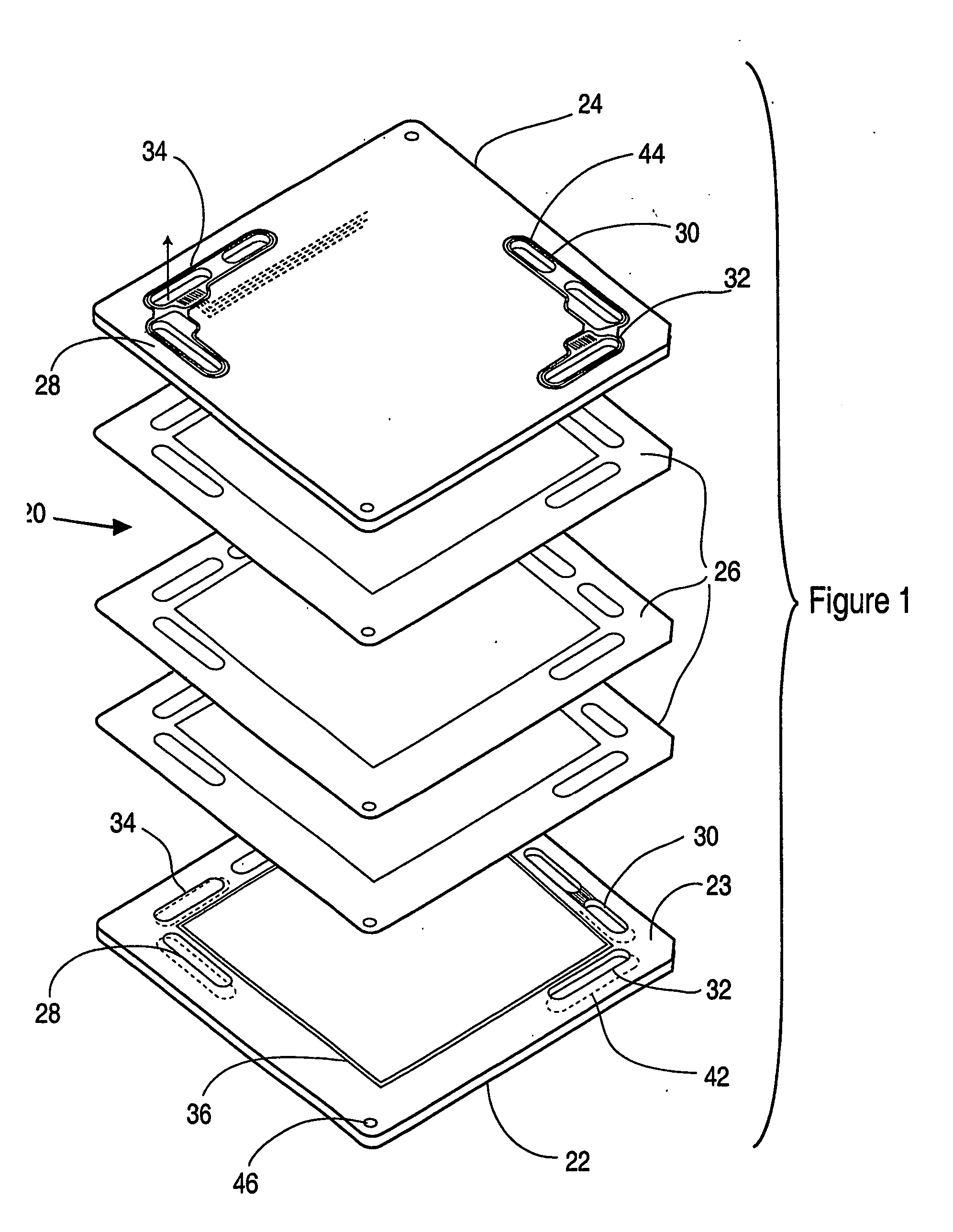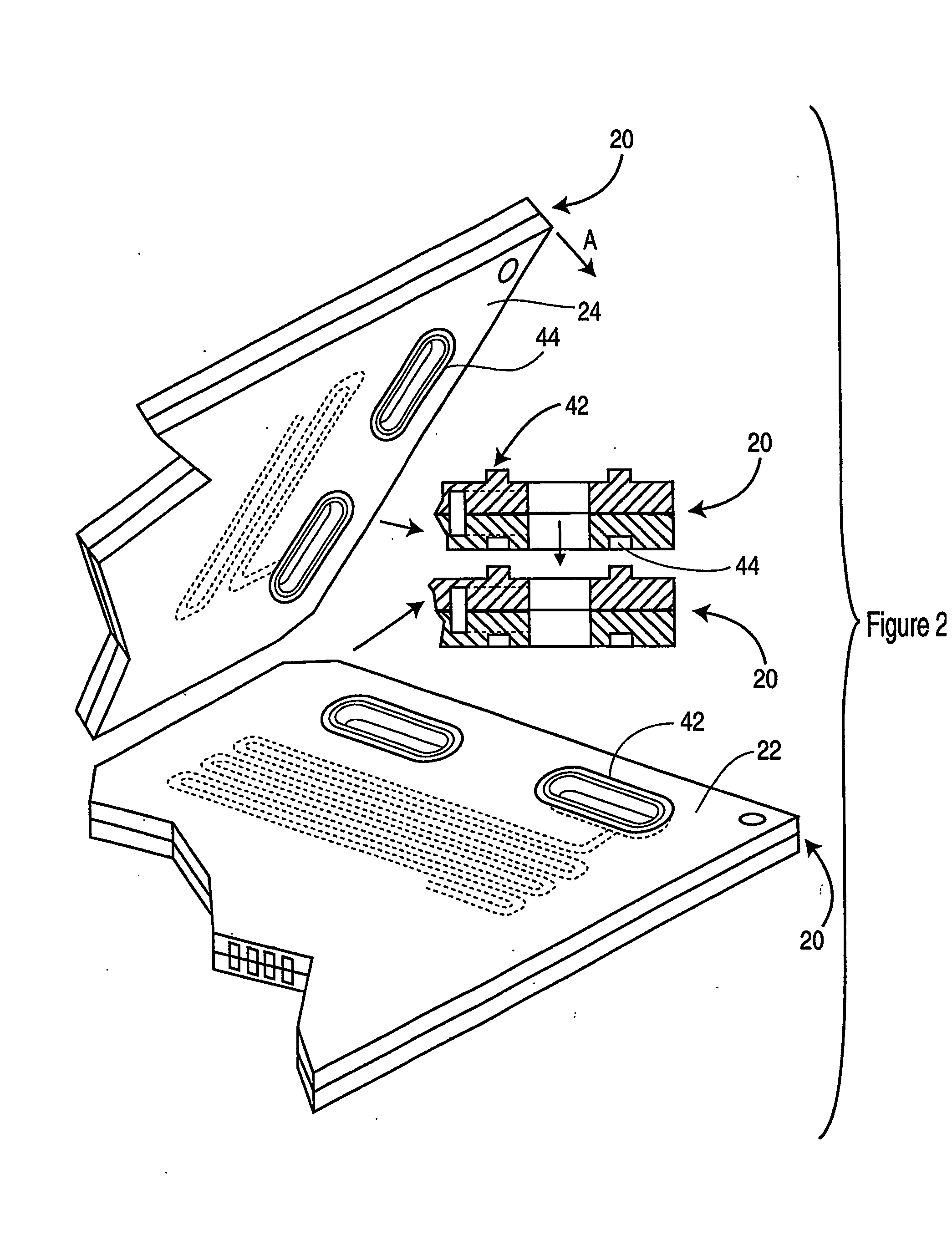Modular fuel cell cartridge and stack
a fuel cell and module technology, applied in the direction of fuel cells, fuel cell auxilaries, electrical equipment, etc., can solve the problems of difficult and expensive bipolar plate manufacture, high cost, complex plates, etc., and achieve the effect of improving energy and power density and well-functioning cells
- Summary
- Abstract
- Description
- Claims
- Application Information
AI Technical Summary
Problems solved by technology
Method used
Image
Examples
example 1
[0072] Modular, unitized electrochemical fuel cell cartridges were designed and constructed for a 500 W fuel cell stack module in general accordance with the embodiment depicted in FIG. 1. The Stack comprised 40 cartridges and was designed to be operated using methanol fuel and air as oxidant. Each cartridge consisted of two monopole plates and membrane electrode assembly (MEA). The MEA included a proton exchange membranes such as Nafion®—DuPont, a catalytic material such as platinum, platinum-ruthenium alloys, and porous diffusion backing / layers. The diffusion layer (DL) was edge sealed by impregnating its perimeter with a thermoplastic fluoropolymer. The MEA was formed by hot pressing the edge-sealed DL against the membrane. The manifold holes were cut in the same pressing step. The MEA consumed the fuel and oxidant through the electrochemical processes and produced an electrical current, which was drawn from the electrodes to the external circuit. The plates were made of conducti...
PUM
| Property | Measurement | Unit |
|---|---|---|
| thickness | aaaaa | aaaaa |
| thickness | aaaaa | aaaaa |
| electrically conductive | aaaaa | aaaaa |
Abstract
Description
Claims
Application Information
 Login to View More
Login to View More - R&D
- Intellectual Property
- Life Sciences
- Materials
- Tech Scout
- Unparalleled Data Quality
- Higher Quality Content
- 60% Fewer Hallucinations
Browse by: Latest US Patents, China's latest patents, Technical Efficacy Thesaurus, Application Domain, Technology Topic, Popular Technical Reports.
© 2025 PatSnap. All rights reserved.Legal|Privacy policy|Modern Slavery Act Transparency Statement|Sitemap|About US| Contact US: help@patsnap.com



